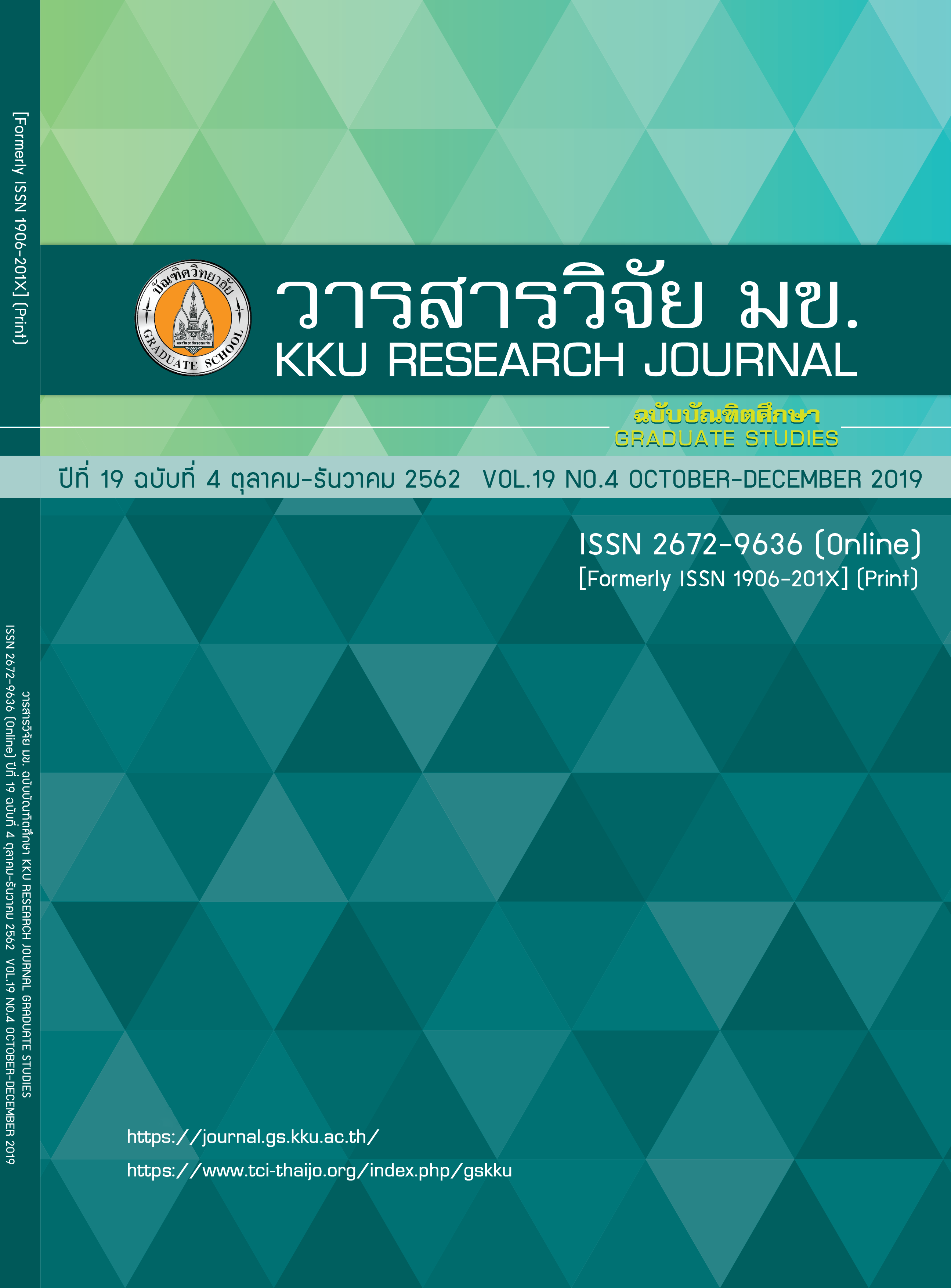Electrical Effects of Wind Energy Generation on Power System in Area of the Central II Part, Lao People’s Democratic Republic
Keywords:
Wind power generation, Voltage stability, Renewable energyAbstract
Currently, the hydropower plants are the important energy resources in Lao People’s Democratic Republic (Lao. PDR). However, the hydropower plants may have some disadvantages of generation and capacity depending on the water volume during the rainy season; therefore, the government has promoted the utilization of other renewable energy resources to increase the power stability. One project is the construction of the wind farm for renewable energy source to supply energy in Central II part, Lao PDR. In this paper, the electrical effects of wind energy generation on the power system were analyzed for installation in an area of Central II part, Lao PDR. The DIgSILENT software based on load flow analysis with the installed capacity at 20, 40, 60, 80, 100 and 120 % of energy lacking demand was used for the analyzer. The results indicated the dependence of the power flow, voltage, power factor and power loss of the system on the different installed capacities. The total power generation and power loss in this area of 126.24 MW and 5, respectively. The increased wind power generation of 40 % of energy demand can cause increment of power supply of 215.56 MW and power loss of 6% of total power generation. However, it can be reduced the import energy of 77.17 MW.
References
2. Novaes Menezes EJ, Araujo AM, Bouchonneau da Silva NS. A review on wind turbine control and its associated methods. Journal of Cleaner Production. 2018; 174: 945-953.
3. Dupont E, Koppelaar R, Jeanmart H. Global available wind energy with physical and energy return on investment constraints. Apply Energy. 2018; 209: 322-338.
4. Wang X, Zeng X, Li J, Yang X, Wang H. A review on recent advancements of substructures for offshore wind turbines. Energy Convers management. 2018; 158: 103-119.
5. Global wind energy report [Internet]. Annual marketing update 2017; Cited 2018 Aug 20. Available, from http:// www.researchgate.net/publication/324966225.
6. Kokturk G, Tokuc A. Vision for wind energy with a smart grid in Izmir. Renewable and Sustainable energy reviews. 2017; 73: 332-345.
7. Mohseni-Bonab SM, Rabiee A, Mohammadi-Ivatloo B. Voltage stability constrained multi-objective optimal reactive power dispatch under load and wind power uncertainties. Renewable energy. 2016; 85: 598-609.
8. Oliveira CC, Bonini Netto A, Miussi CR, Alves DA, Castro CA. New representation of PV buses in the Current injection Newton power flow. International Journal of Electrical Power & Energy Systems. 2017;90: 237-244.
9. Feilat EA, Azzam S, Al-SAlaymeh A. Impact of PV and Wind power plants on voltage and frequency stability of Jordan’s national grid. Sustainable cities and Society. 2018; 36: 257-271.
10 Katinas V, Gecevicius G, Marciukaitis M. An investigation of wind power density distribution at location with low and high wind speeds using statistical model. Apply Energy. 2018; 218: 442-451.
11. Gupta N. A review in the inclusion of wind generation in power system studies. Renew Sustain Energy. 2016; 59: 530-543
12. Baloch MH, Kaloi GS, Memon ZA. [Internet]. Current scenario of the wind energy in Pakistan challenges and future perspectives a case study. Energy Reports. 2016; 2: 201-210. Available from http:// dx.doi.org/10.1016/j.egyr.2016.08.002.
13. Planning System Office, Technical department, Electricite du Laos: Electrical demand forecast and power system planning of Laos. Power system development. 2017 April: 1-8.
14. Electricite du Laos, Ministry Energy and Mine The electric power transmission system in Lao PDR. Lao grid code. 2019 Jan: 1-100.
15. Hansch K, Naumann A, Wenge C, Wolf M. Communication for battery energy storage systems compliant with IEC 61850. Electrical power and Energy systems. 2018; 103:577-586.
16. Rahmani S, Amjady N. A new optimal power flow approach for wind energy integrated power systems. Energy 2017; 134: 349-359.
17. Government of Lao PDR [Internet]. Renewable Energy Development Strategy in Lao PDR. 2011; 1-40. Available from http:// www.eepmekong.org /index.php/resources/country-reports/laos/57-laos-06/file.
18. Al Ameri A, Ounnissa A, Nichita C, Djamal A. Power loss analysis for wind power grid integration based on Weibull distribution. Energies. 2017; 10(4).
19. Magdi Ragheb, Adam M. Wind turbines theory-the Betz Equation and Optimal Rotor Tip Speed Ratio [Internet] 2011; Cited 2018 Aug 15. Available from: http://www.intechopen.com/books/fundamental-and-advanced-topicsin-wind-power/wind-turbines-theory-the-betz-equation-and-optimal-rotor-tip-speed-ratio



